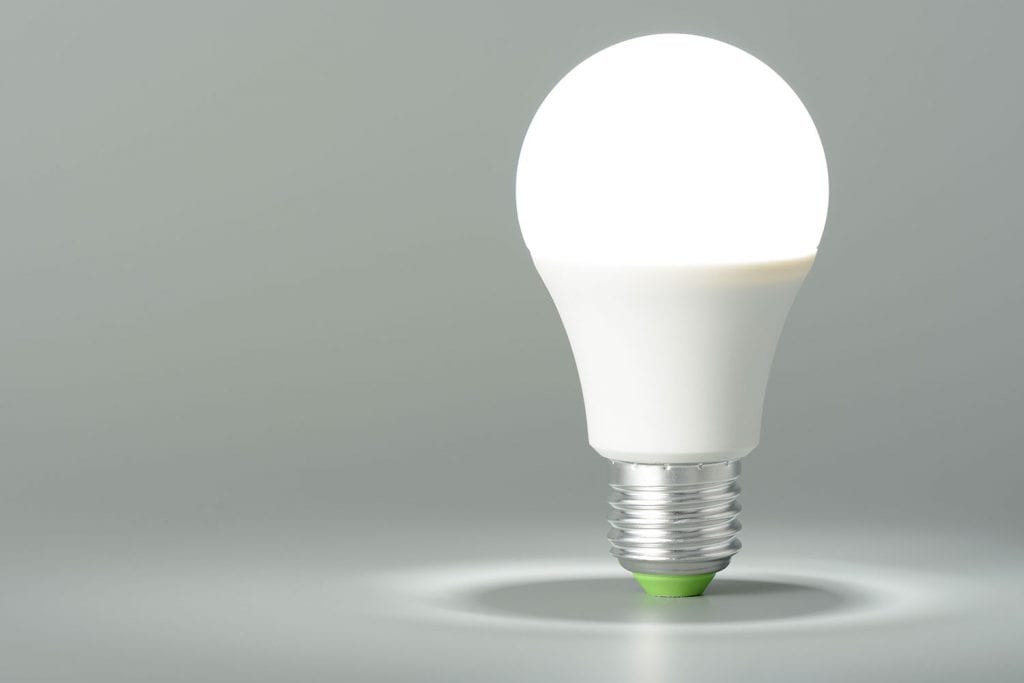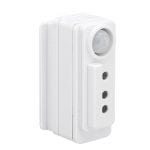LED Lighting Glossary
Helpful LED lighting terms & definitions:
Accent Lighting: Technique that emphasizes a particular object or draws attention to a particular area. Accent lighting usually utilizes a tight beam angle PAR, MR or GU light source.
Alternating Current (AC): Electrical current in which the flow of electric charge continually reverses direction.
Ambient Lighting: Lighting designed to provide uniform light levels throughout an area.
Amp (Ampere): The basic unit of electric current adopted under the System International Unites. Typical household circuit carries 15-50 amps.
Backlighting: Use of light source to illuminate from behind without protrusion through the panel.
Ballast: The device that limits amount of current in an electrical circuit.
Beam Angle: Size of the cone of light produced by lighting source measured in degrees.
Bulb Base: The part of the bulb that is used to set it into place and to make contact with electricity. There are many types and sizes. Most common are E26/27. which are the USA and European standard.
Screw in Base: The 26 and 27 equates to the diameter measurement in millimeters of the threads of a screw-in bulb base. This type of bulb includes the PAR 20, PAR 30 and PAR 38 Type. There are MR16 and MR11 type Base as well as the push and twist GU10.
Can Light: Short for Canister Light. Another name for a recessed light or down light which is a fixture installed into a hollow opening in a ceiling.
Candela: Unit of luminous intensity. Describing the intensity of a light source in a specific direction.
CCT: Correlated color temperature is a numerical value of the color of a light source measured in Kelvins. Red, warm colors are associated with lower color temperatures. Blue as cool colors associated with higher temperatures. Incandescent lamps are typically at 3000K and fluorescent lamps range from 3000-7500K.
CE: Certifies product has met EU (European) consumer safety, health and or environmental requirements. Compact fluorescent which consume less energy than Incandescent with the negative aspect of mercury/poison content.
CFL: Compact Fluorescent Lamp. Disadvantages are mercury content, slow warmup and buzzing. Does offer energy savings over incandescent and halogen.
Color Temperature (CT): This is a measurement of the Yellowness or Blueness of a white light source based on a Kelvin number. Yellowish white described as “Warm White” is compared to incandescent lamps which have a lower Kelvin temperature number around 2700-3000 range. White and bluish white described as “Natural White” and “Cold White” have a higher Kelvin temperature of 5000-7000
Cool White: Kelvin color temperature of 5500-7000.
CRI: Color Rendering International system to rate lighting device ability to render object colors. The higher the CRI (based on a 0-100 scale) natural outdoor light has a CRI of 100.
Diffuser: Optical element used to mix light ray to improve uniformity of light.
Direct Current (DC): Electrical current which the flow of electric charge moves in one direction only.
DLC: Design Light Consortium is a strict rating system for lighting products. To qualify a 5-part application must be filled which includes application contact, model information, photometric and electrical data, lumen maintenance and document checklist. Each of the 5 pats requires IED LM79 and LM80 Test reports. ANSI/UL 1598-04 reports and full IES Files are part of the qualification process.
Down Light: Light source set in a metal cylinder. Mounted or recessed into the ceiling so the beam of light is directed downward.
Driver: LED power supply providing either a constant level of current or a constant level of voltage.
E26/E27: Edison Screw fitting system designated at standard screw-in bulb bases. Also referred to a “Medium” or “Standard” Base.
ETL: A product safety testing and certification similar to UL.
Flood Light: A lamp that provides a broad beam intended to light a general area.
Fluorescent Tube: Light source consisting of a glass tube filled with low pressure mercury vapor. Electrical discharge through the vapor produces ultraviolet light that excites phosphor materials on the inside of the tube which emit visible light.
Flux: Sum of lumens emitted by a light source.
Foot Candle: A measure of illumination in which one unit equals the amount of light delivered by a one-candela light source foot candle to a one square foot surface one foot away.
Full Cutoff: A style of housing used for industrial fixtures like wall packs. Reflectors on all sides except for the bottom. All light is directed down under the fixture.
GU: A bipin base code. Each Pin has two diameters. Being larger near the ends in order to twist and lock into position in the socket. GU10 Being one of the most common base products almost always 110/120V AC.
Heat Dissipation: This is the transition of thermal energy form a hotter object to a cooler object. With LED heat sinks made from high quality aluminum and other alloys accomplish this.
HID: Generic term describing mercury vapor, metal halide, high pressure sodium light sources and luminaries.
High Intensity Discharge (HID): Electrical lamp filled with gases and other compounds in which an electric arc is passed between tungsten electrodes to produce light.
High Pressure Sodium (HPS): High-intensity discharge lamp offering a warm Correlated Color Temperature (CCT) high levels of efficiency, long life with very modest levels of CRI.
HPS: High Pressure Sodium is a type of high intensity discharge lamp with a warm correlated color temperature.
Incandescent Lighting: Light produced when a filament is heated to incandescence using electric current. Incandescent lighting is very inefficient since most of the energy is wasted as heat rather than light.
Kelvin (K): Unit of temperature starting from absolute zero.
Kelvin Temperature: Color measure as to Yellowness or Blueness of the color white. The higher to Kelvin temperature the more “Blue” the whiter the light.
Kilowatt (KW): Measure of electrical power equal to 1000 Watts.
LED: Light Emitting Diode solid state semiconductor device that converts electrical energy directly into light.
LED Life: The LED Life refers to the number hours an LED can be used before needing to be replaced. Typically LED life reaches up 50,000 hours plus for quality manufactured products.
LM-79: IESNA approved method for the electrical and photometric test of solid state lighting devices. Specifies procedures for measuring total luminous flux electrical power, luminous efficacy.
LM-80: IESNA approved method of measuring Lumen depreciation of LED Light sources. It is related to the effective useful life of the product.
Lumen: Measurement of luminous flux of quantity of light emitted by a source. Higher the lumen, the brighter the light.
Lumen Maintenance: Describes how long a light source will retain a certain percentage of its initial lumen output.
Luminaries: Lighting fixture complete with lamp, housing, power supply and optical components used to direct light.
Luminous Efficacy: Measurement of how effective the light source is in converting electrical energy to lumens of visible light. Usually expressed in Lumens per Watt (LPW).
Lux: Unit of luminance or density of light falling onto a surface. One lux is equal to one lumen per square meter.
Metal Halide (MH): High Intensity light source produced by the radiation from mercury, plus halides of metals such as sodium, scandium, indium, and symposium.
Mercury Vapor: A high intensity discharge lamp with a warm correlated color temperature. Most mercury vapor luminaires are no longer available due to environmental concerns.
Mogul Base: Also known as E39/E40. Most common base size for industrial and commercial lighting fixtures.
MR: A bipin base code for a 2 sharp pin push in base. Almost always 12V Product. The MR16 LED lamps are a very popular replacement for halogen.
Natural White: Light with a Kelvin temperature between 4500 and 5500.
Occupancy Sensor: Is a lighting control device which detects occupancy of a space which turns the lights on or off automatically by using infrared or ultrasonic technology.
PAR Lamp: Acronym for a Parabolic Reflector. PAR20, PAR30, PAR38 are the most common.
Photocell: Sensors on light fixtures that control the fixture by turning it off or on according to the light levels.
Power Supply: Device that supplies electrical or energy. Most LED power supplies convert line voltage (110AC) to 12 & 24V DC.
Retrofit: Refers to upgrading a fixture, room, or building by installing new parts or equipment.
RGB: Acronym for Red, Green, and Blue. These are the 3 primary colors of light. Combinations of these 3 colors to create wide variety of other colors.
RoHs Compliance: Restricts the use of certain dangerous substances commonly used in electrical and electronic equipment.
SMD LED: Surface mounted LEDs that are soldered to the surface of the circuit board. The LED Die is integrated into the package design. Surface mounted LEDs can be assembled faster and with better quality than dip-through-hole components.
Solid State Lighting: Refers to lighting technology that gives illunination when electricity is passed through a semiconductor as opposed to a gas or vacuum tube. A description of the devices that do not contain moving parts or parts that can break, rupture, shatter, leak or contaminate the environment.
Spotlight: A lamp that produces a narrow beam angle designed to illuminate a specific targeted area.
Thermal Management: Controlling the operating temperature of the product through design. Examples include heat sinks & air flow.
Troffer: A ceiling recess like and inverted trough with its bottom next to the ceiling. Used especially to enclose flourescent lamps and most recently LED.
Tube Light: Term used to describe a fluorescent tube. Most typical sizes are T5, T8, T10 and T12. T indicates the shape of the bulb is tubular. Typical diameters T5 =5/8 ” T8 =1″ T12=1 1/2″, traditionally the T8, T10, and T12 use the dual pin G13 Socket.
Ultraviolet (UV): Invisible radiation that is shorter in wavelength and higher in frequency than visible violet light. UV rays are light waves that are similar to the light from the sun. UV radiation can cause oxidation, fading of colors of furniture, carpet, draperies and art work.
UL: Underwriters Laboratories: Recognized as a high standard. It is an official approval by the US Federal Occupational Safety and Health Administration known as OSHA. Ul ratings apply to safety standards, product inspection, product testing and training services.
Warm White: White color with a Kelvin temperature between 2800-3200.
Watt: The unit of electrical power as used by an electrical device during its operation. Many lamps come with rating in watts to indicate their power consumption. A light source with a higher lumen per watt value is more efficient.
Wave Length: Distance between two points of corresponding phase and is equal to waveform velocity divided by frequency.








Recent Comments